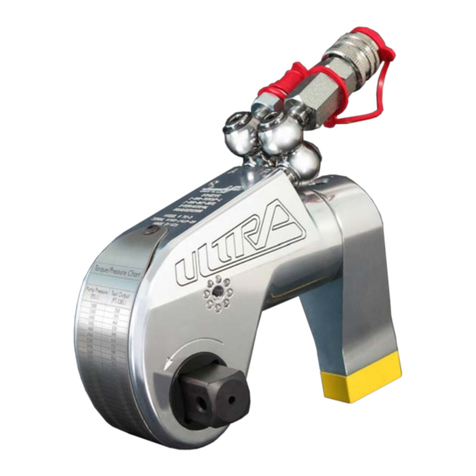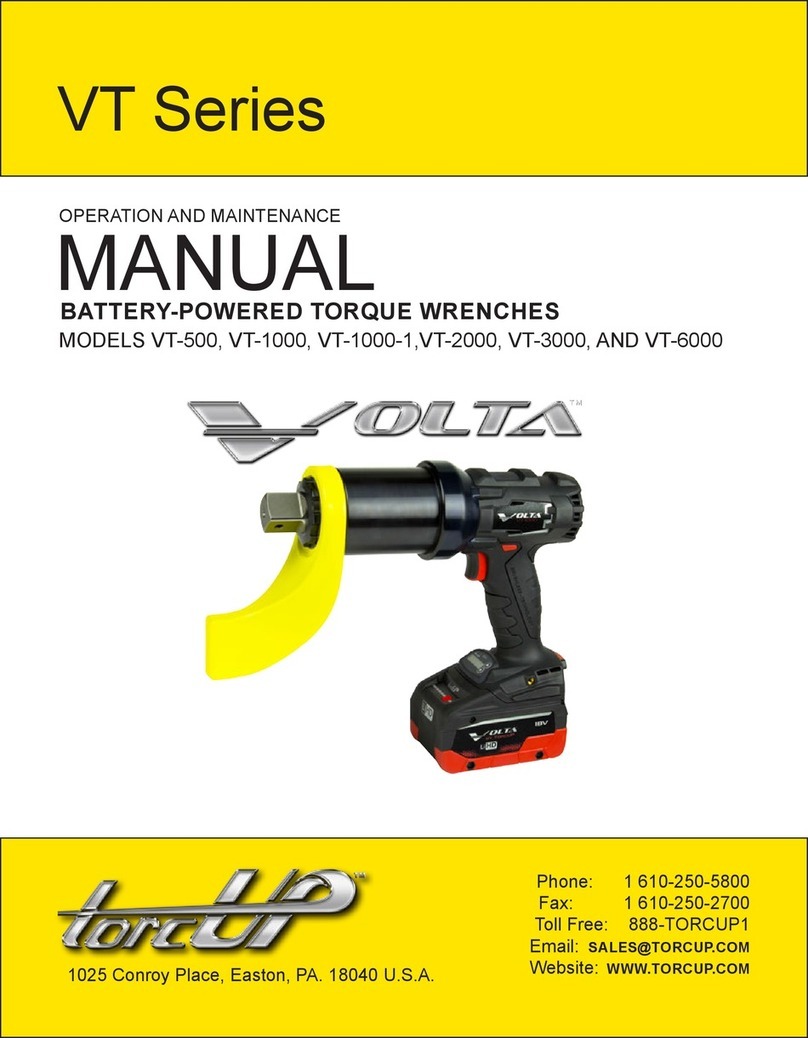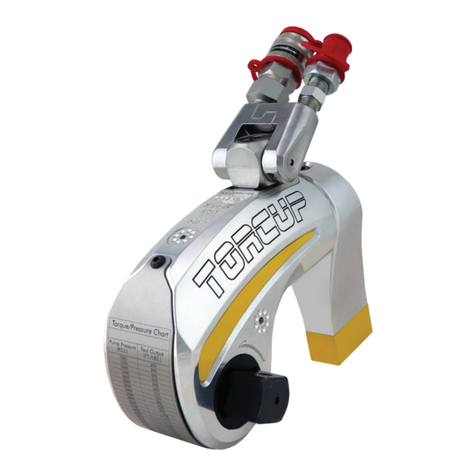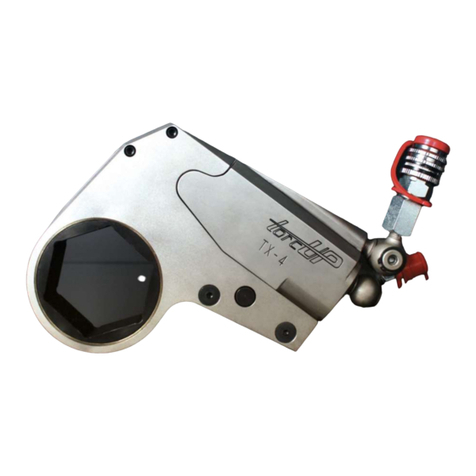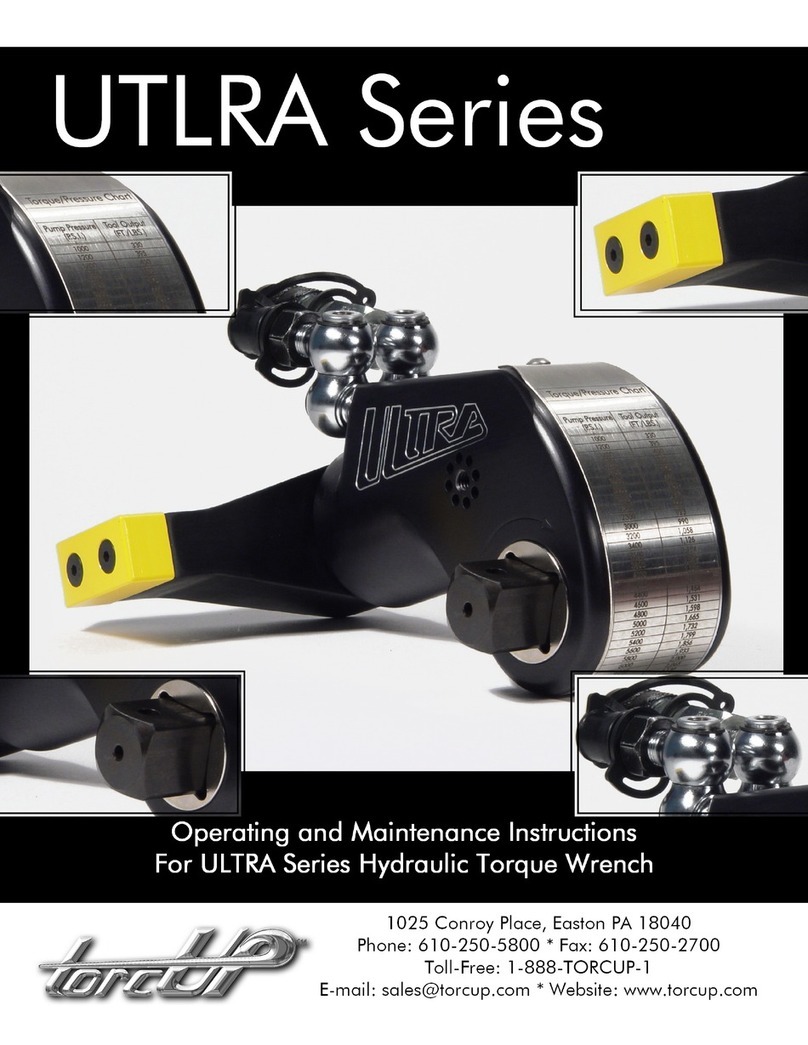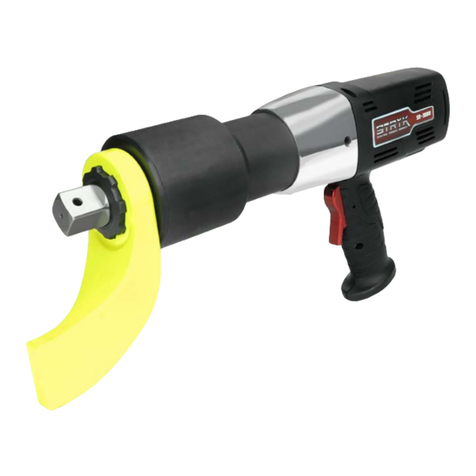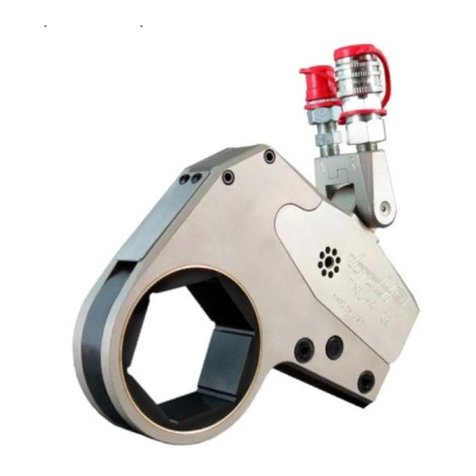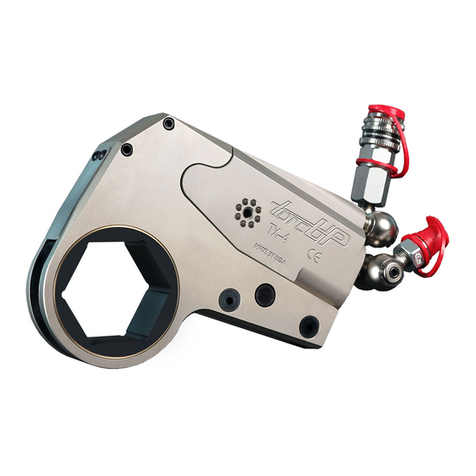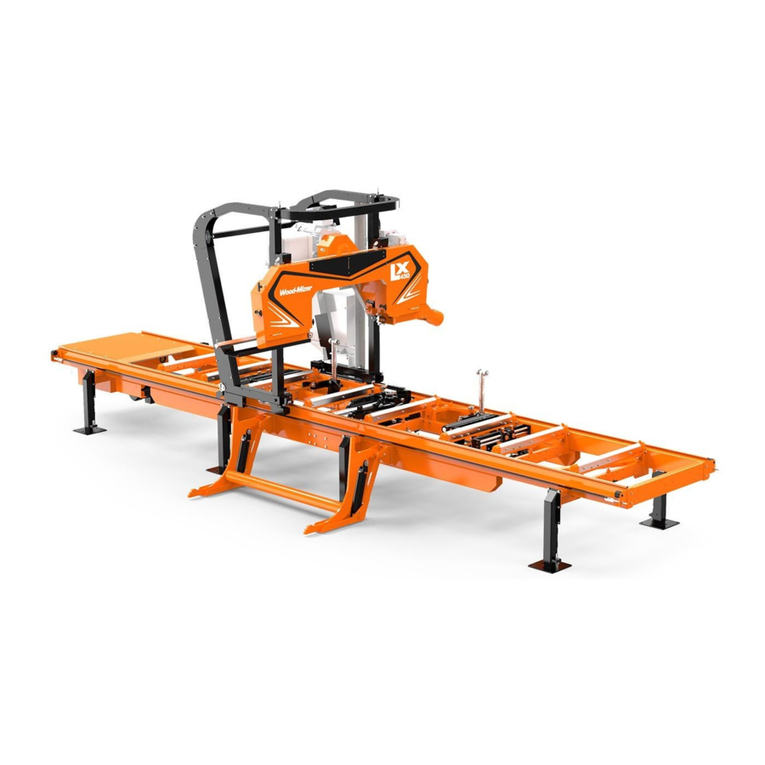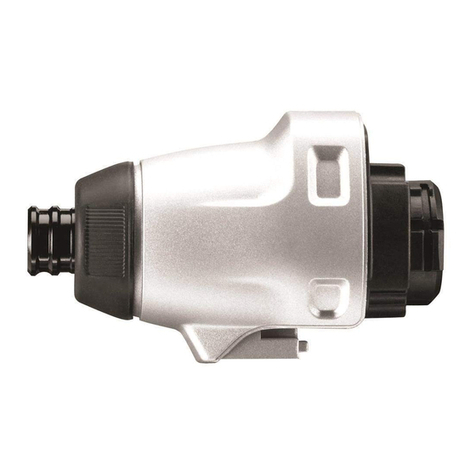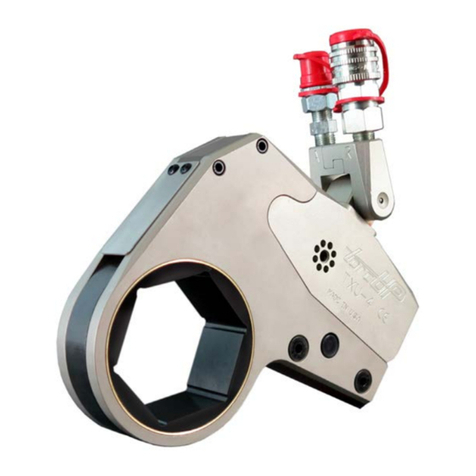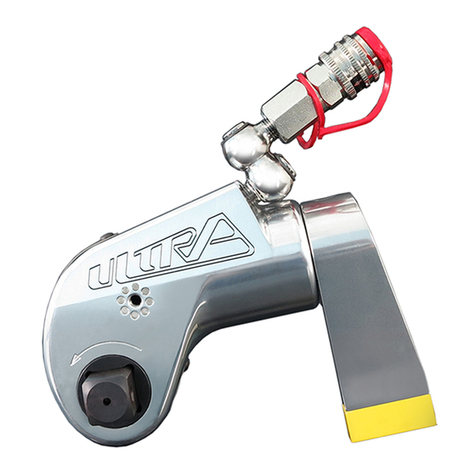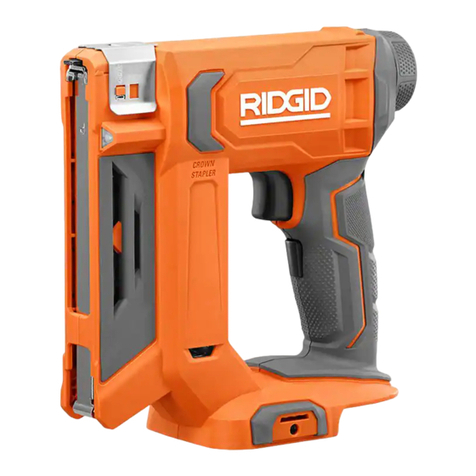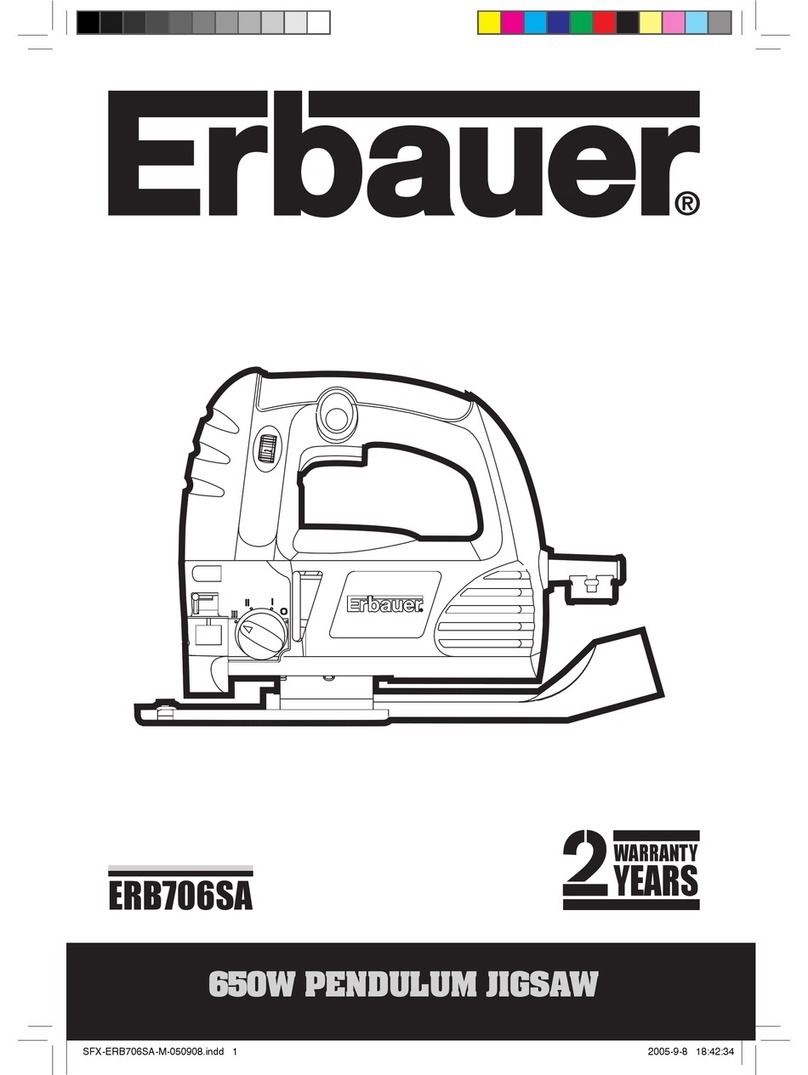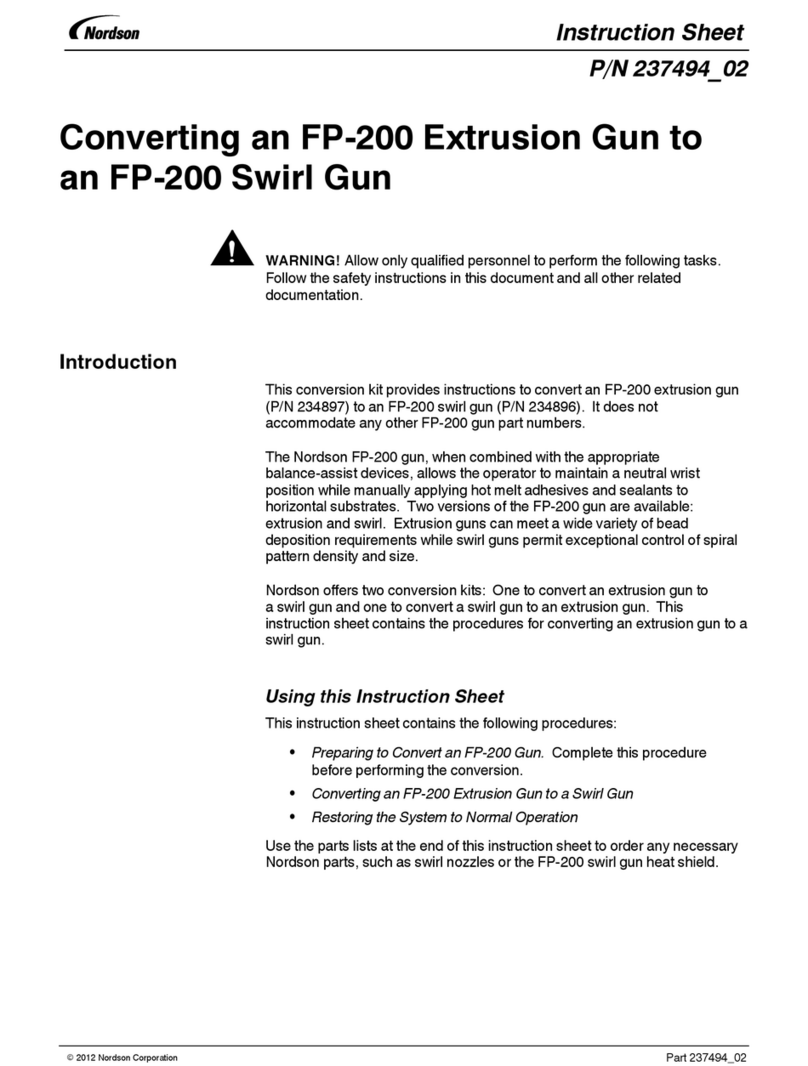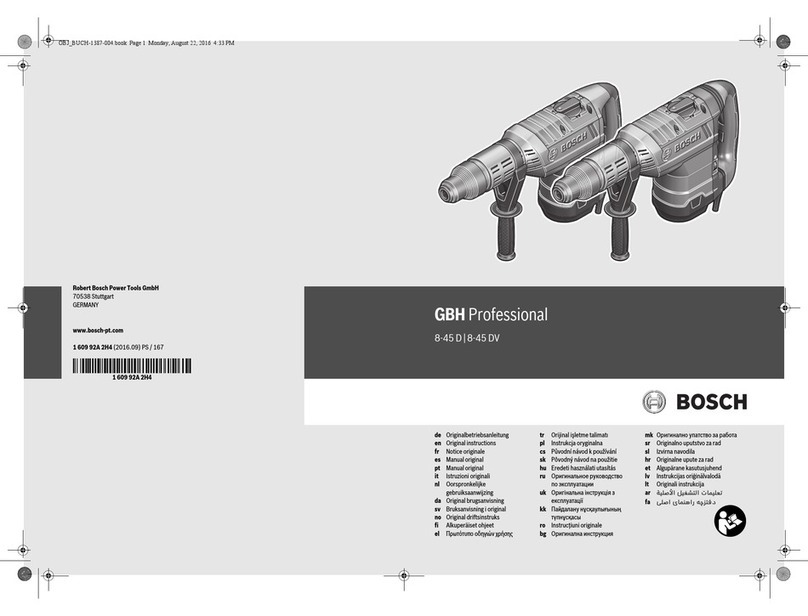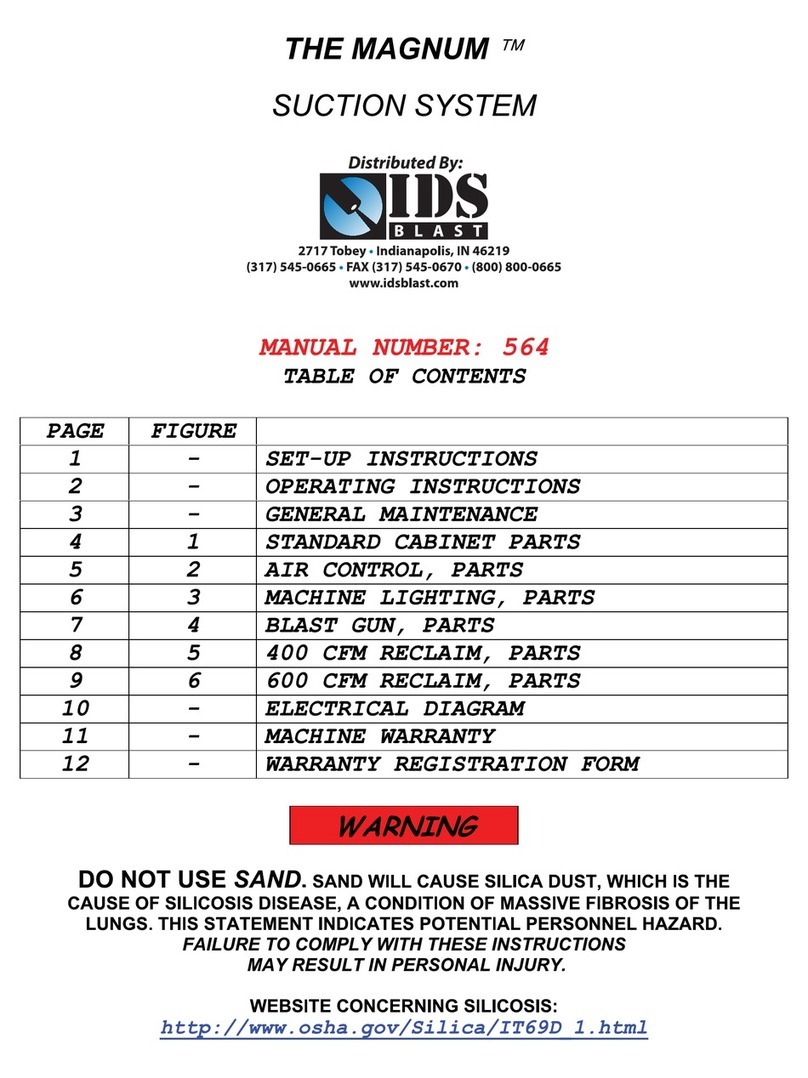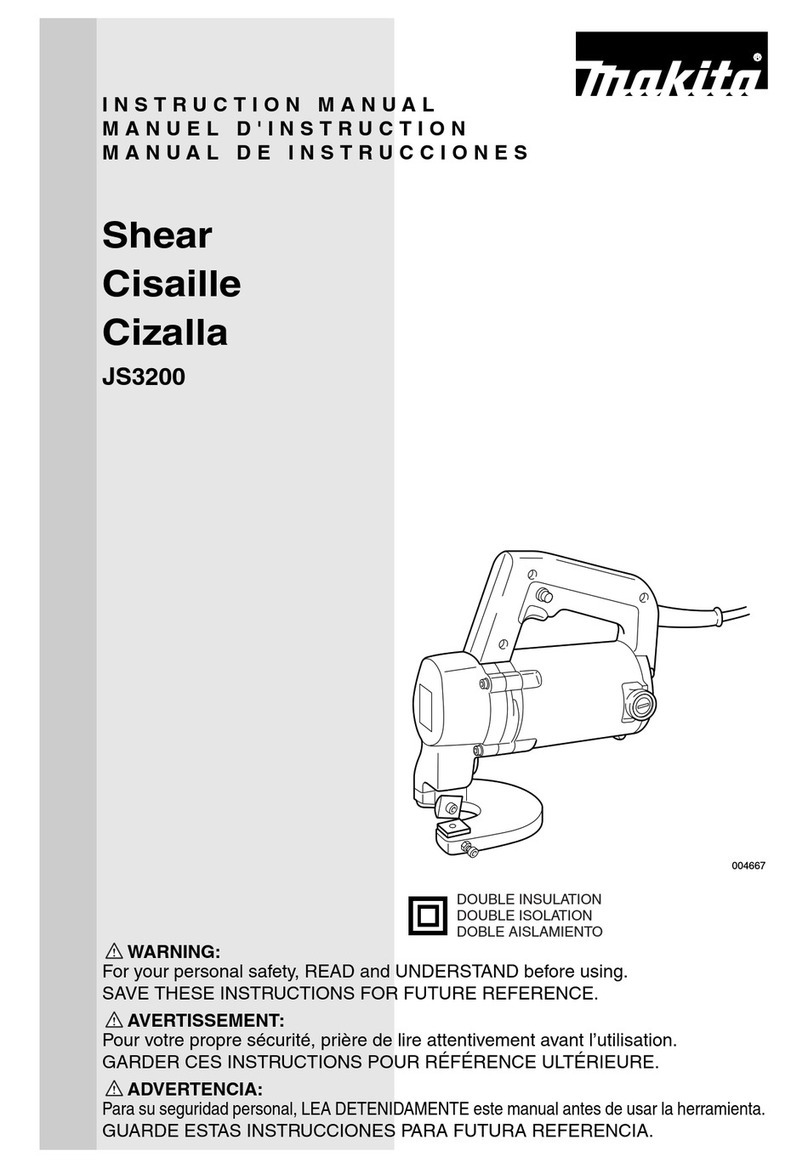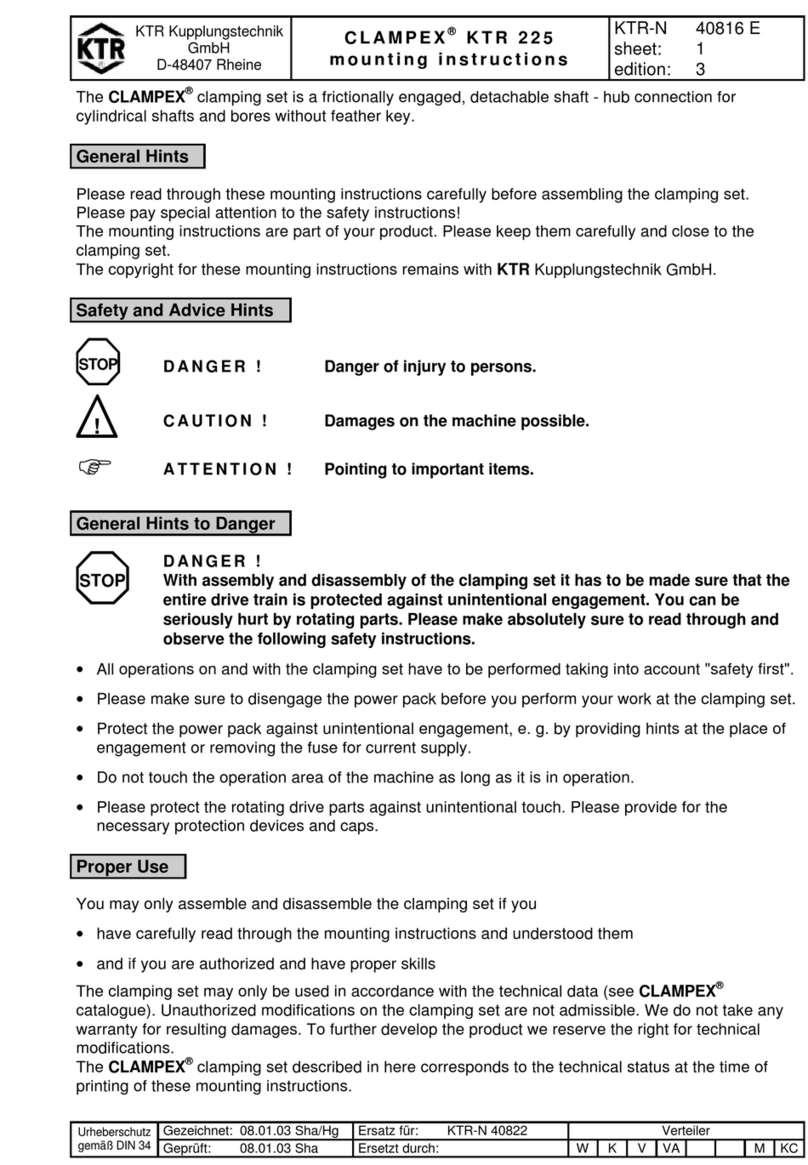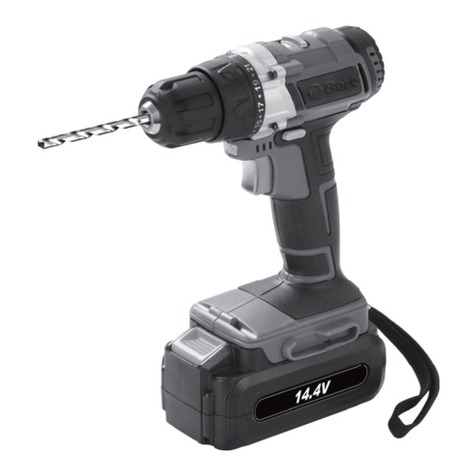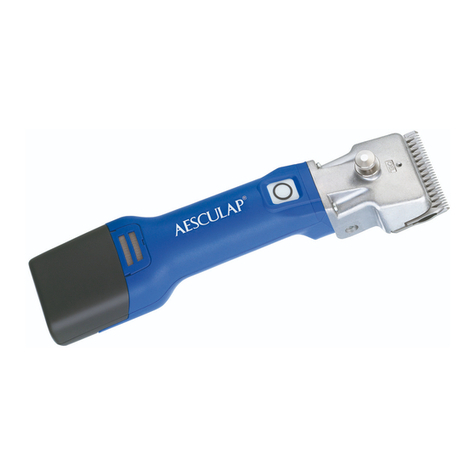
4
SAFETY INFORMATION
OPERATIONAL SAFETY
1. Inspect, maintain, operate and install the tool in accordance with all applicable standards and
regulations (local, state, country, federal, etc.)
2. Do not remove any labels. Replace any damaged labels immediately.
3. Always use clean dry air. Exceeding the maximum PSI recommended for the tool and noted
calibration chart may result in tool damage and/or hazardous situations including excessive
speed, rupture, or incorrect output torque or clamp load.
4. Be sure all hoses and ttings are at least a 1/2” I.D. and tightly secured.
5. Ensure an accessible emergency shut off valve has been installed in the air supply line and
make others aware of its location.
6. To prevent hose whipping if a hose fails or a coupling disconnects, install a properly sized
safety air fuse upstream of the hose and use an anti-whip device across any hose coupling
without an internal shut-off.
7. Do not use damaged, frayed or deteriorated air hoses and ttings. Do not paint hoses.
8. Keep clear of whipping air hoses. Shut off the air compressor before approaching a whipping
hose.
9. Always turn off the air supply, bleed the air pressure and disconnect the air supply hose
before installing, removing or adjusting any accessory on this tool, or before performing any
maintenance on this tool or any accessory.
10. Do not lubricate tools with ammable or volatile liquids such as kerosene, diesel or jet fuel.
Only use TorcUP recommended lubricants.
11. Only use proper cleaning solvents to clean parts. Use only cleaning solvents which meet
current safety and health standards. Use cleaning solvents in a well ventilated area.
12. Keep work area clean, uncluttered, ventilated and illuminated.
PERSONAL SAFETY
1. When wearing gloves, always be sure that the gloves will not prevent the throttle mechanism
from being released.
2. Always wear eye protection when operating or performing maintenance on this tool.
3. Always wear hearing protection when operating this tool.
4. Always use Personal Protective Equipment appropriate to the tool used and the material being
worked on. This may include dust mask or other breathing apparatus, safety glasses, ear
plugs, gloves, apron, safety shoes, hard hat and other equipment.
5. Avoid breathing in any exhaust from tool use.
a. Some dust may also be created by working in close proximity to the following chemicals:
i. Lead from lead-based paints
ii. Crystalline silica from bricks and cement and other masonry products
iii. Arsenic and chromium from chemically treated lumber
Your risk from these exposures varies depending on how often you do this type of work.
To reduce your exposure to these chemicals: work in a well ventilated area, and work with
approved safety equipment, such as dust masks that are specially designed to lter out
microscopic particles.
6. Keep others at a safe distance from your work area or ensure they use appropriate personal
protective equipment.




















